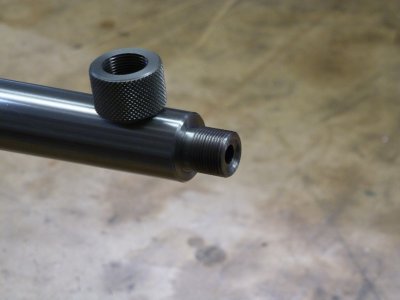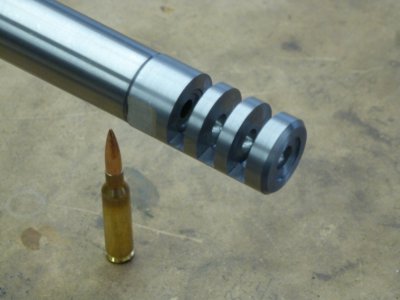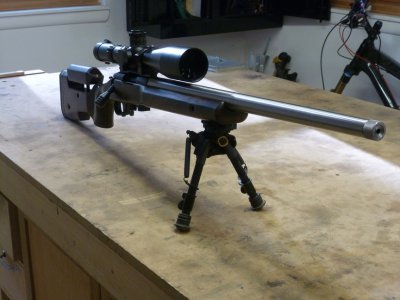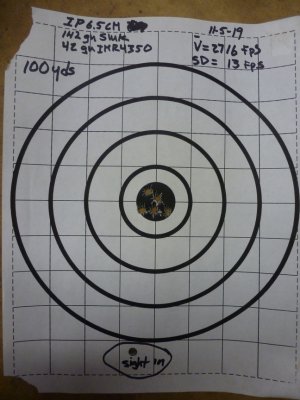re: drawings: I made the drawings around 8 years ago. I could reproduce them, I guess.
The trouble is, that everything has to be turned concentric, and that the barrel threads have to be concentric to the lands to about .0004 or you will get serious problems. (the closer the better - we managed to get withing .0002 on concentricity and over .500 we were within one and a half tenths straight to the exit vector of the barrel. There are a bunch of operations that happen from one side, then it is turned around and indicated in to one tenth in order to get the other ops to be right. The external threads on the comp are less picky... I suppose you could relax things a little and make the bore .040 larger than the bullet. We chose .010 for our design.
The slots are made with a .125 HSS cutter, and they are (from memory) .210 wide. these are cut using a rotary table that is super solid, holding the finished piece at a 7.5 degree downward angle. Trouble is, it is very touchy, and until I made several, it was easy to break the cutter off. Titanium is very sticky. Most carbides won't work because you need a very positive rake tool to cut with low enough pressure not to pooch the cutter. It takes a looooong time to cut those slots... I think it took about 40 minutes each, and there are 30 of them to cut... I did about a third of them and a friend of mine took over, and then I finished off the last few.
The optimum for a comp seems to be around 40% of the force from the blast, since there's nothing that can be done about the reaction force from accelerating the bullet. On our recoil sled, we seem to have achieved about 38%, by our calcs. the rest of the perceived recoil is taken up in moving the rifle - with the big scope it weighs 10 Kg (22lbs).




